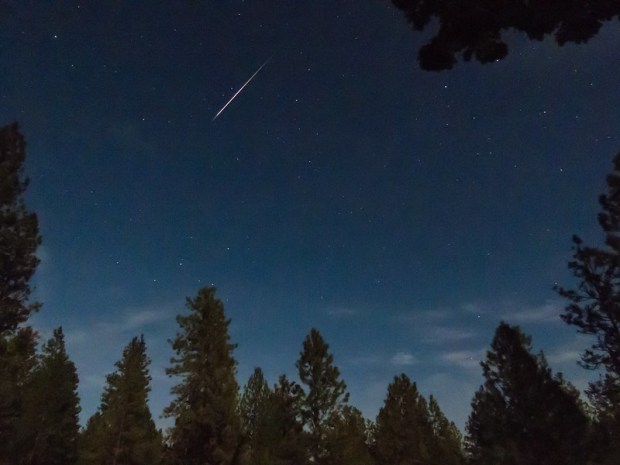The “steam” is the gentle glow of our Milky Way Galaxy. In fact, when we look toward Sagittarius — these evenings visible from mid-northern latitudes scraping along the southern horizon — we look toward the galaxy’s crowded center. This area overflows with many wonderful deep-sky objects. The three targets profiled here this month lie so close to one another that they fit within the same binocular field.
Let’s begin with the finest bright nebula in the summer sky the Lagoon Nebula (M8). The Lagoon lies about a binocular field west (to the right) of the star Kaus Borealis (Epsilon [ε] Sagittarii), at the tip of the teapot’s top. First, use the finder chart on this page to help locate the star in binoculars, and then look toward the western edge of the field. You should spot several stars enmeshed in a glowing cloud. Many of those stars belong to the open cluster NGC 6530, which is forming within the Lagoon.
Careful examination should show that the Lagoon isn’t uniform, but instead looks a little lopsided. The western side glows more brightly and appears more bulbous than the eastern half. A lane — or “lagoon” — of obscuring dust divides the nebula. Spotting the dark lagoon with binoculars presents a challenge, but it can be found with good eyes, steady hands, and dark skies.
Studies suggest M8 spans 140 by 60 light-years. The hydrogen gas that formed the Lagoon is ionized, which means it bursts into fluorescence by the energy from the stars within. Those same stars create strong stellar winds that spawn funnel-shaped clouds resembling tornados here on Earth. Although they remain hidden to backyard stargazers, the Hubble Space Telescope shows the funnel clouds in amazing detail, with each measuring about half a light-year in length.
Now, without moving your binoculars, look less than half a field north of the Lagoon to find a small diamond-shape pattern of stars. The southernmost star in the diamond actually is surrounded by a second, much smaller patch of nebulosity known as the Trifid Nebula (M20).
Unfortunately, while the Trifid shows up in photographs beautifully, its small size means it appears as a tiny glow through binoculars. You’ll need at least 50x to spot the three dark “lanes” that led the 19th-century astronomer John Herschel to christen it the “Trifid,” from the Latin trifidus, “split into three.”
To put that in perspective, in January 2005, Indiana University scientists unearthed skeletal fossils of a human ancestor believed to have lived about 4.5 million years ago. Something to ponder as you gaze skyward tonight.
These objects, all captured in the same binocular field, are a few examples of what await you toward the center of our galaxy. Be sure to stop by Astronomy.com for some other suggested targets in and around Sagittarius. And while you’re online, drop me a line and let me know what luck you’ve had spotting them.
Next month, we will travel northward along the Milky Way for a look at the celestial shield of Poland’s King Sobieski III (1629-1696). Until then, remember, two eyes are better than one.










